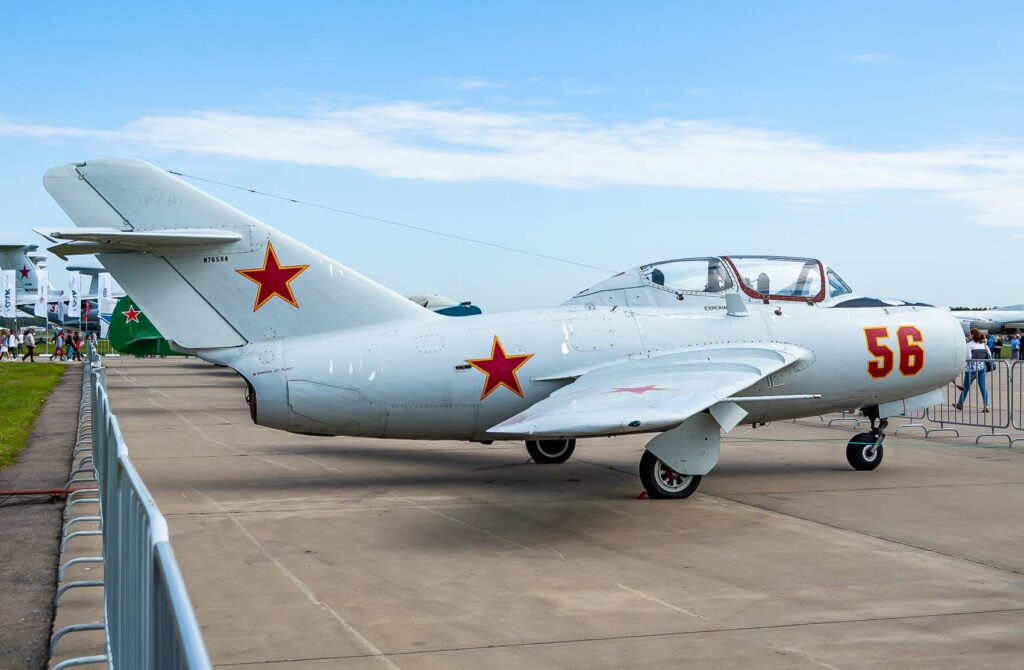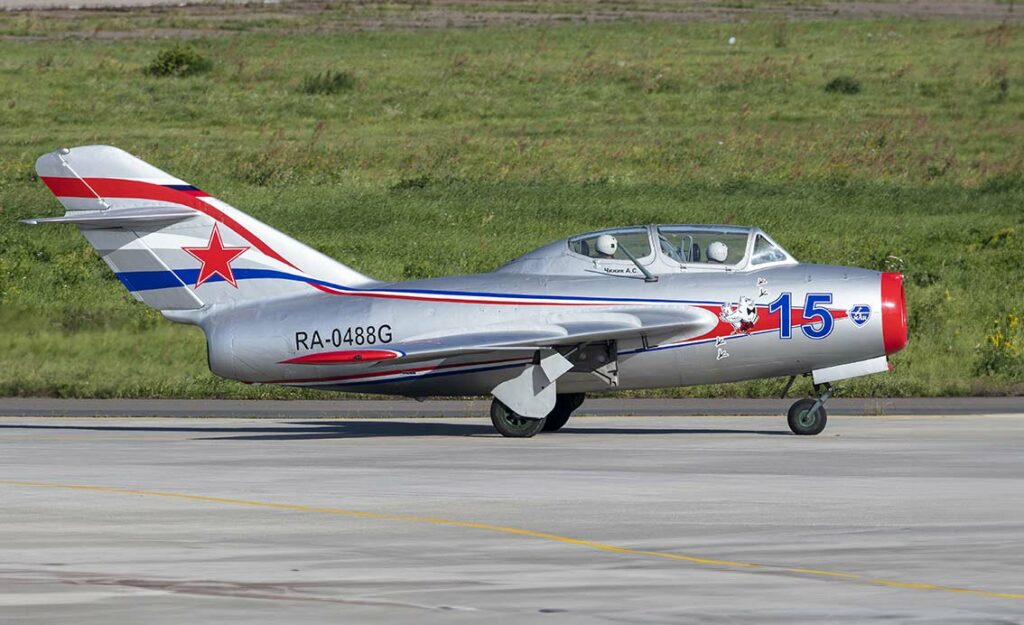The MiG-15, a Soviet jet fighter, was renowned for its swept-wing design, powerful engine, and pivotal role in Cold War aerial combat.
The Mikoyan-Gurevich MiG-15 was a Soviet jet fighter aircraft that played a crucial role in the early years of the Cold War. Known for its advanced design and combat effectiveness, it was widely used by the air forces of the Warsaw Pact and allied nations. The MiG-15 represented a significant advancement in jet fighter technology, marking a shift in air combat dynamics during the Cold War. It was designed to counter Western aircraft and establish air superiority.

History of the Development of the Mikoyan-Gurevich MiG-15
In the context of the post-World War II era, the Soviet Union faced the need to develop advanced jet fighters to compete with Western aircraft advancements. The MiG-15 was developed to fulfill this requirement, with the goal of creating a superior air combat fighter.
The development was led by the Mikoyan-Gurevich design bureau, under the direction of Artem Mikoyan and Mikhail Gurevich. The program was launched in the late 1940s, responding to the rapid advancements in jet technology worldwide.
The MiG-15 first flew on December 30, 1947, marking a significant milestone in Soviet aviation. It was a response to the growing tensions of the Cold War and the need for air superiority.
The NATO reporting name for the MiG-15 was “Fagot,” assigned as part of NATO’s standardized identification system for Soviet aircraft.
Design of the Mikoyan-Gurevich MiG-15
The MiG-15’s design was revolutionary for its time. It featured a swept-wing layout, which enhanced its aerodynamic efficiency at high speeds. The aircraft was powered by a Klimov VK-1 turbojet engine, a Soviet copy of the British Rolls-Royce Nene engine, producing about 5,900 lbs of thrust.
The aircraft had a length of 33 feet (10.08 meters) and a wingspan of 33 feet 1 inch (10.08 meters). Its design incorporated an ejection seat, a pressurized cockpit, and armored protection for the pilot.
One of the main drawbacks of the MiG-15 was its handling at high speeds and its relatively basic avionics and targeting systems compared to Western counterparts. However, its high climb rate, speed, and heavy armament compensated for these shortcomings.
Performance of the Mikoyan-Gurevich MiG-15
The MiG-15’s performance was a key factor in its success. It could reach a top speed of about 670 mph (1,080 km/h) and had a service ceiling of 50,000 feet (15,240 meters). Its operational range was approximately 1,240 miles (2,000 km) with external fuel tanks.
Compared to contemporaries like the American F-86 Sabre, the MiG-15 had superior climb rate and service ceiling, but it was less effective in horizontal maneuvers. This made it a formidable adversary in high-altitude dogfights but less dominant in lower altitude engagements.

Military Use and Combat of the Mikoyan-Gurevich MiG-15
The MiG-15 was heavily armed with one 37 mm cannon and two 23 mm cannons, making it a formidable air-to-air combatant. It saw extensive use in the Korean War, where it was initially superior to all United Nations’ aircraft until the introduction of the F-86 Sabre.
In the Korean War, the MiG-15 engaged in numerous dogfights with the F-86, marking some of the earliest jet-vs-jet battles in history. Its success in these engagements solidified its reputation as a powerful fighter.
The MiG-15 was exported widely to Soviet allies and saw service in various conflicts, including the Middle East and Africa. Over the years, it was gradually replaced by more advanced aircraft but remained in service in some countries for several decades.
The Mikoyan-Gurevich MiG-15 stands as one of the most iconic jet fighters of the early Cold War era. Its advanced design, powerful performance, and significant role in air combat history make it a key aircraft in the development of modern air warfare. The MiG-15’s legacy continues to influence fighter jet design and aerial combat strategy to this day.
Back to the Fighter Jet section.